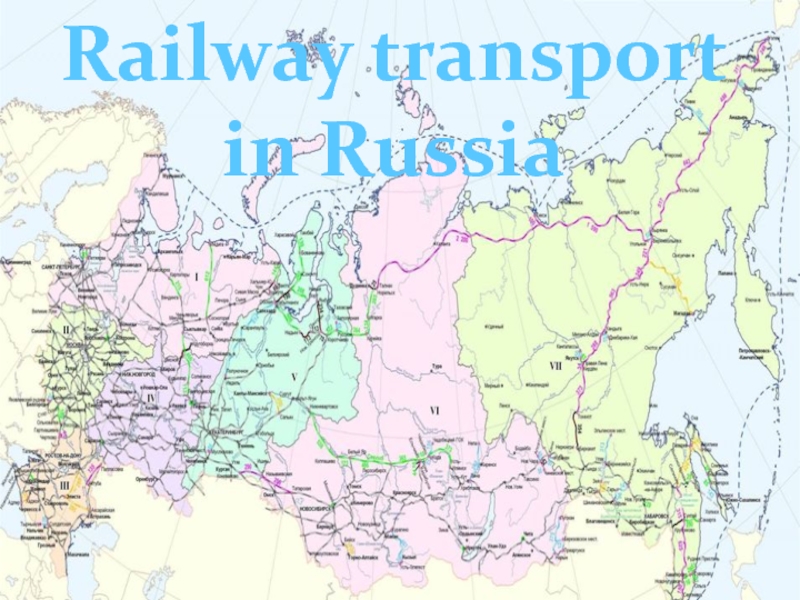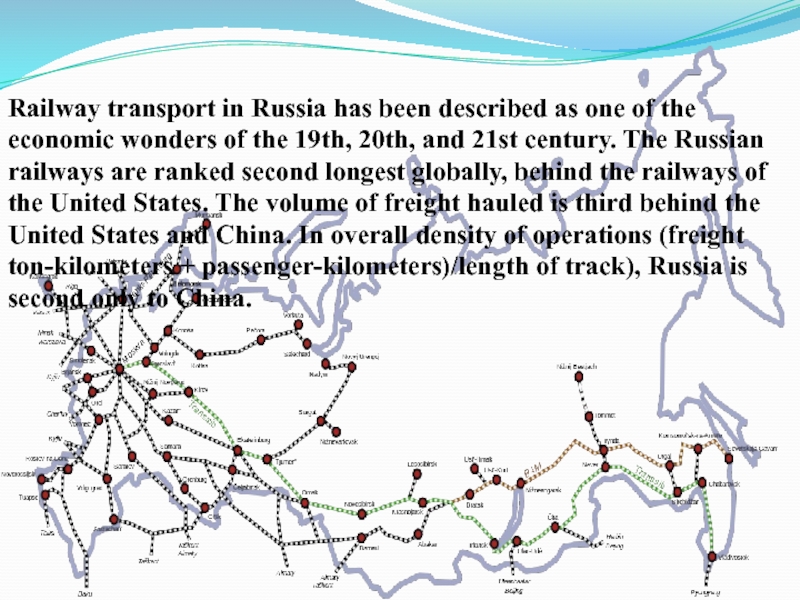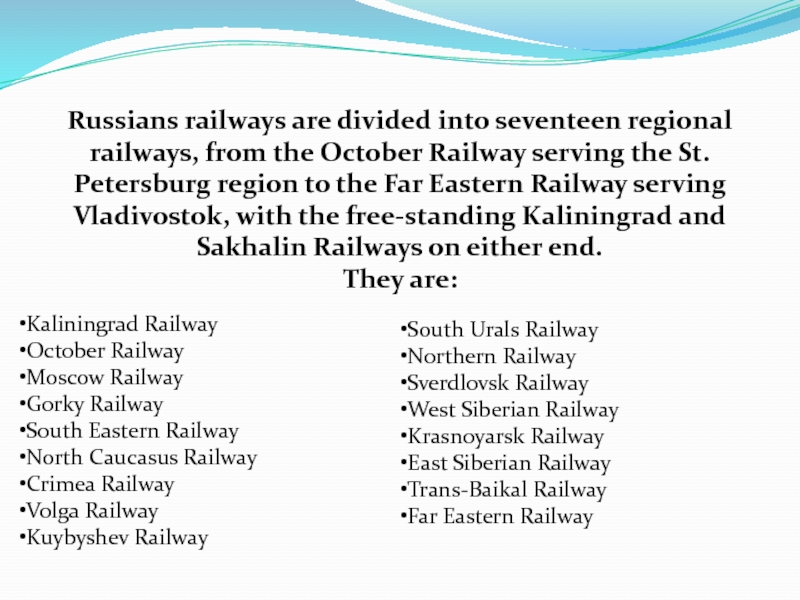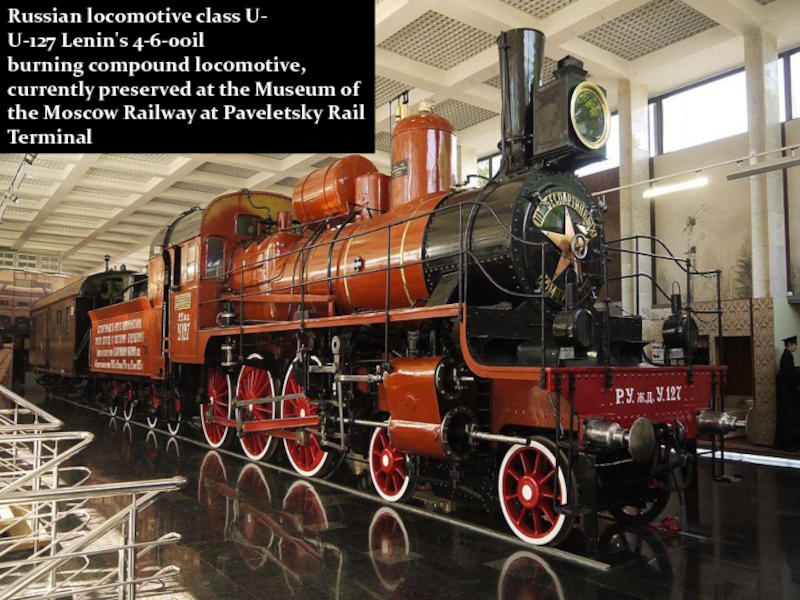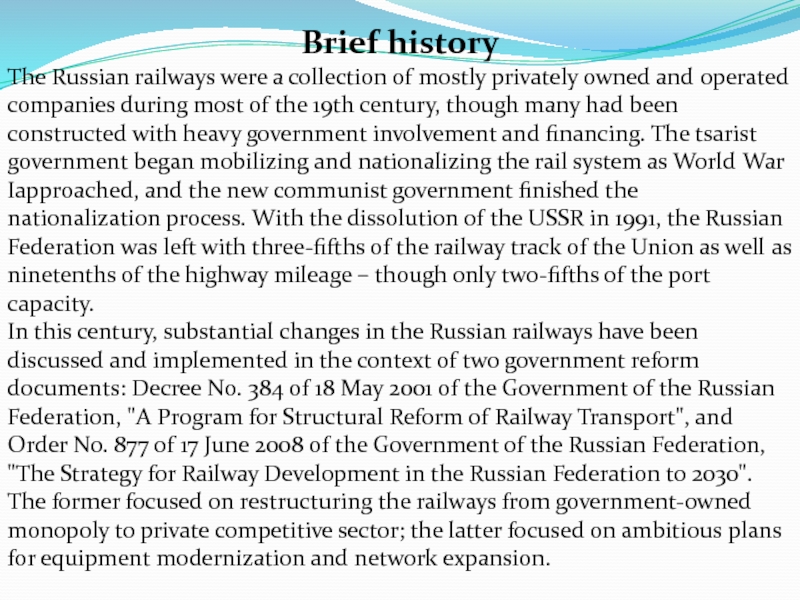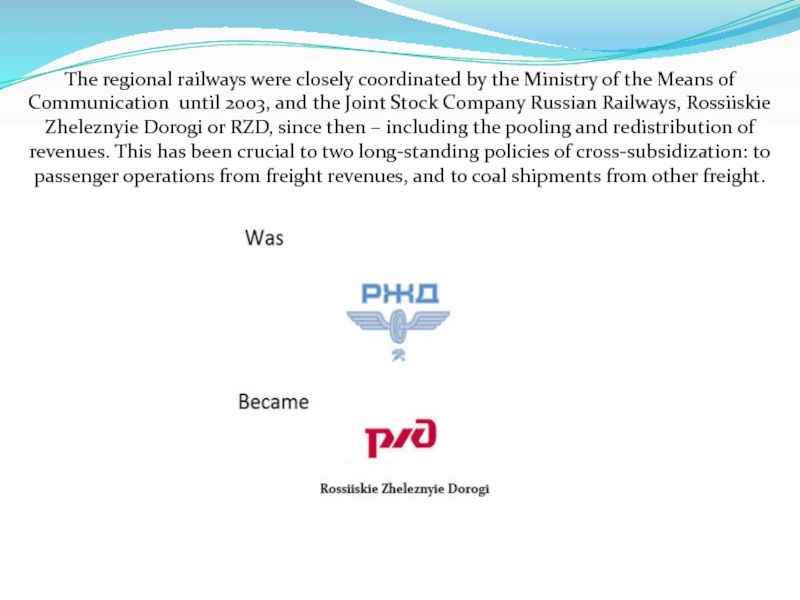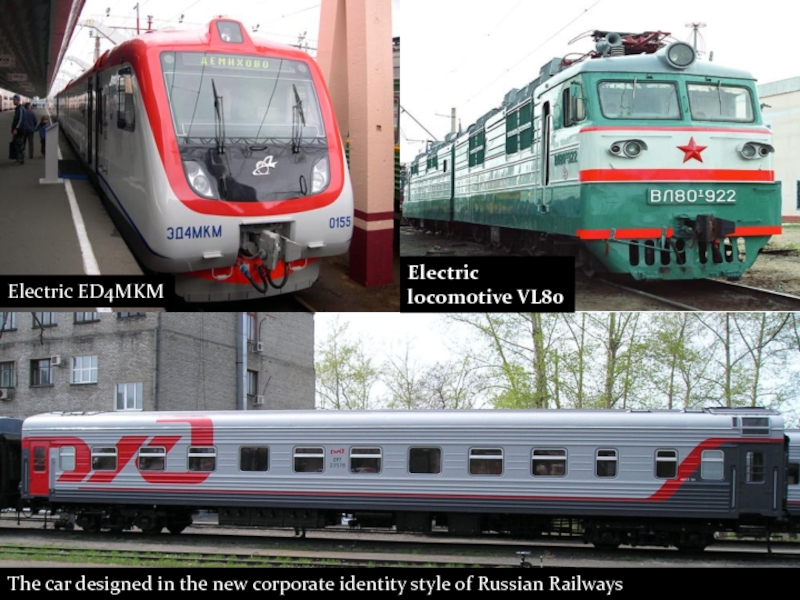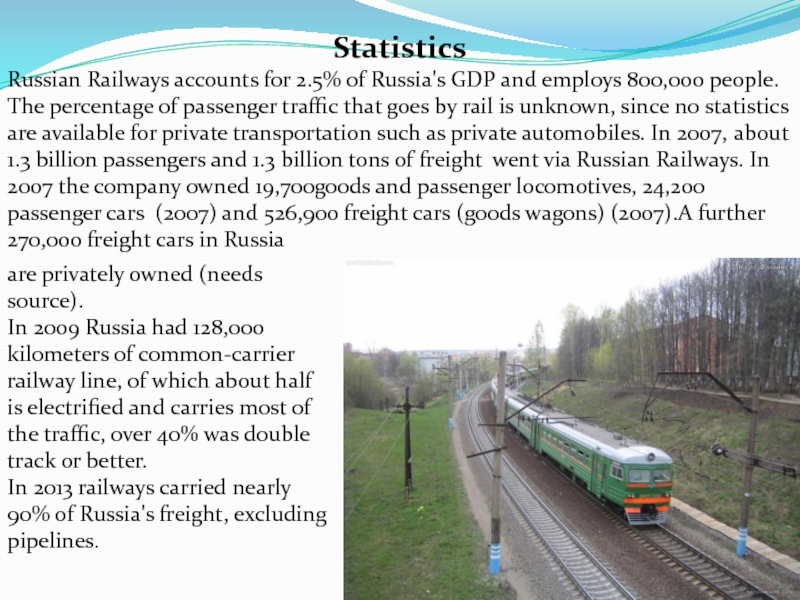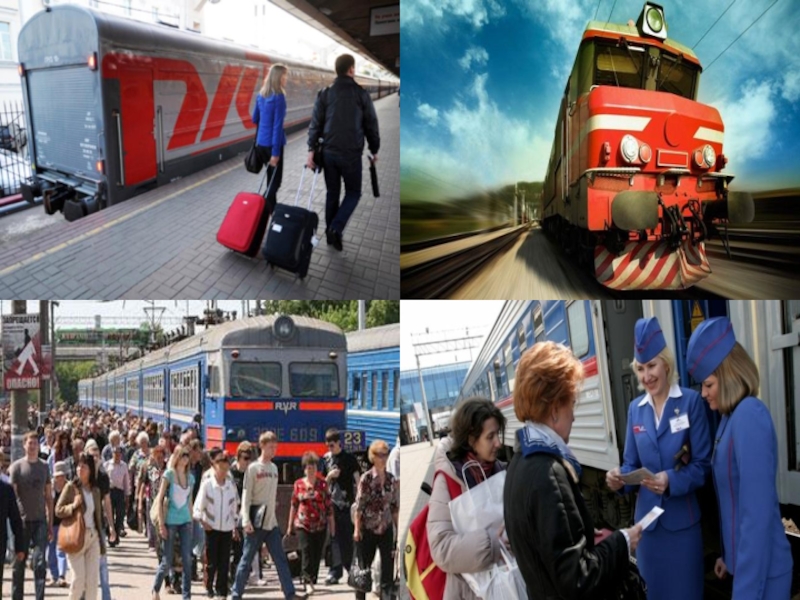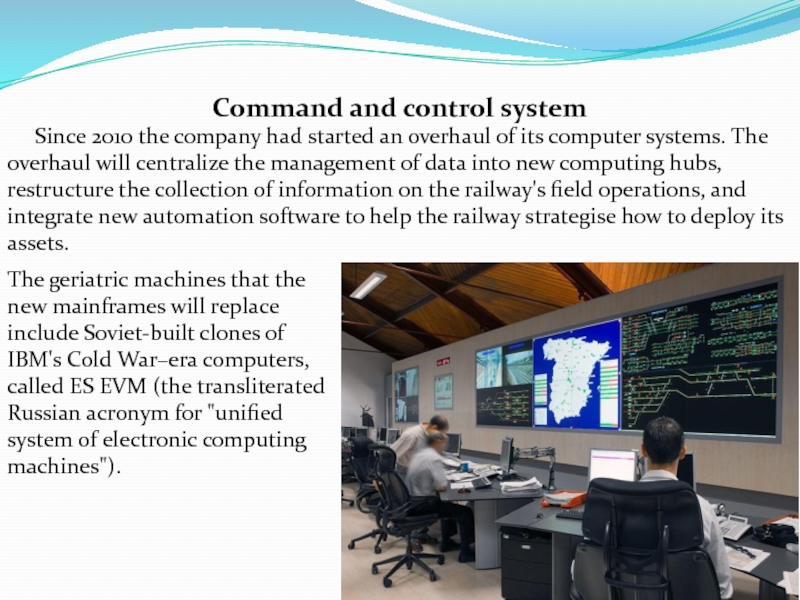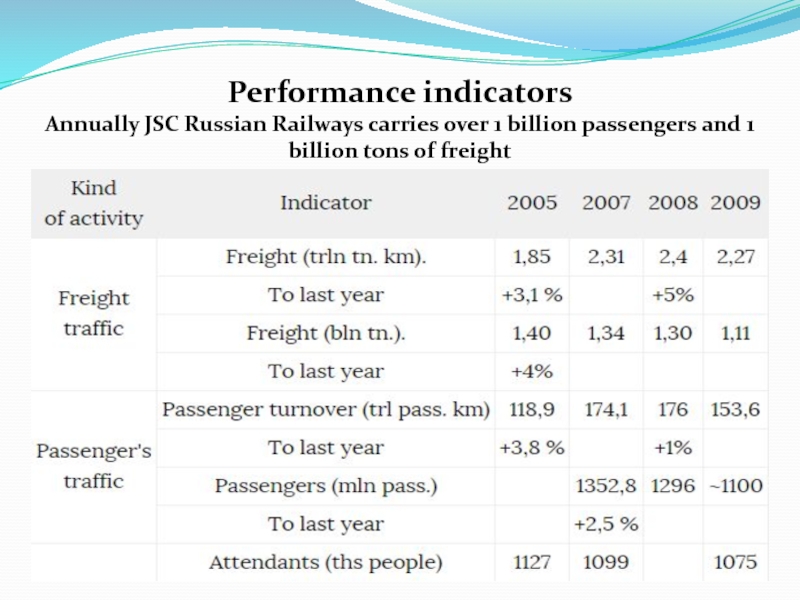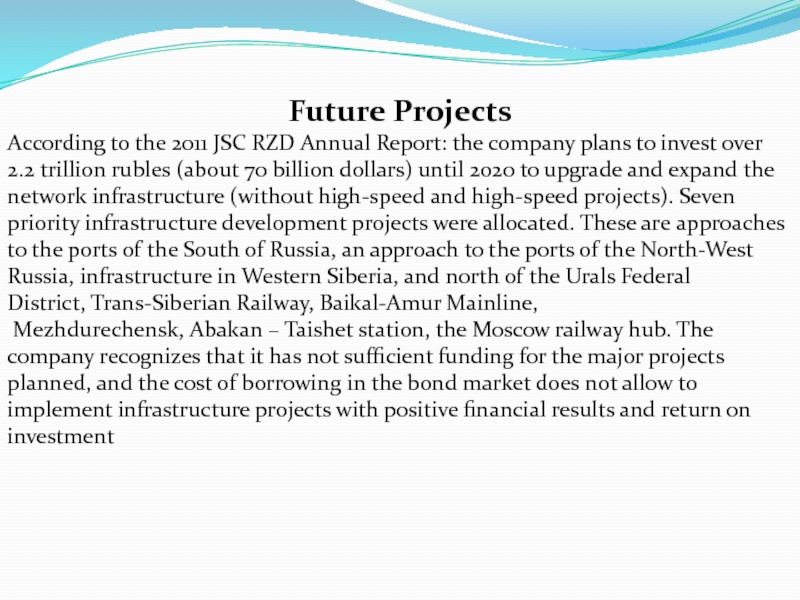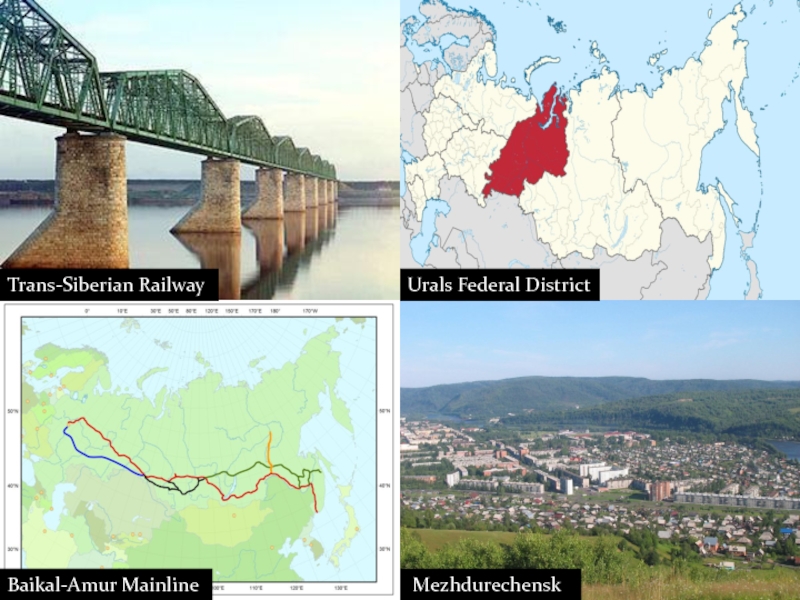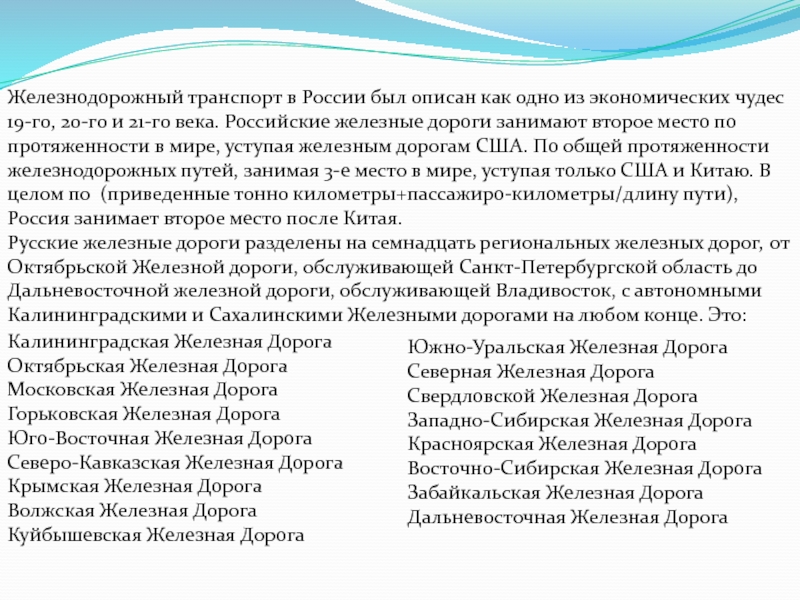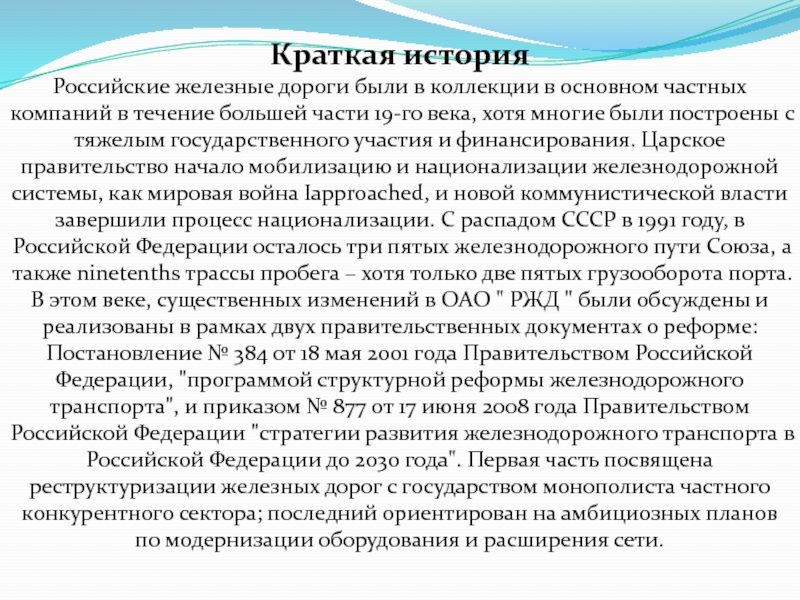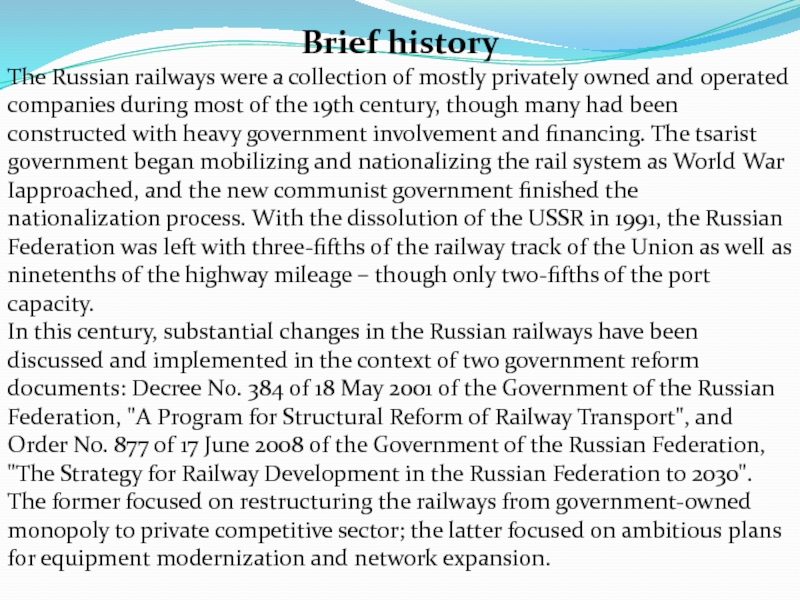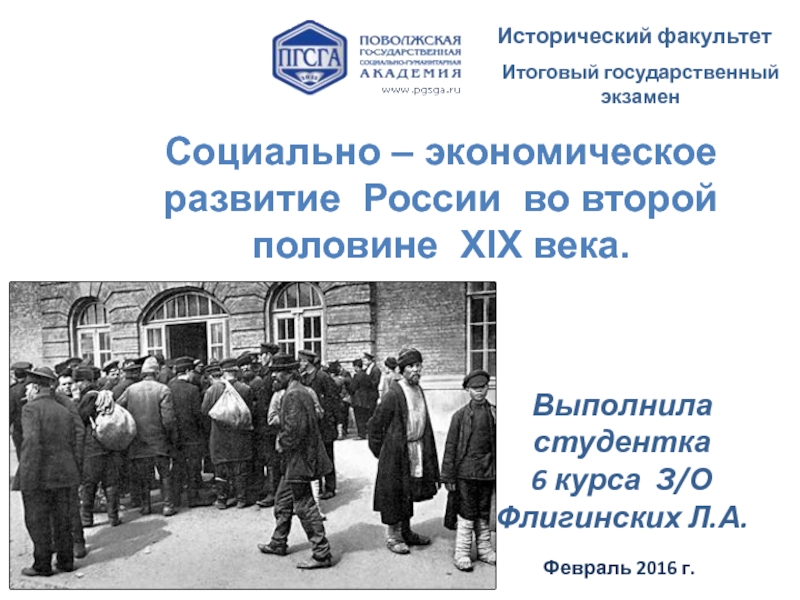- Главная
- Разное
- Дизайн
- Бизнес и предпринимательство
- Аналитика
- Образование
- Развлечения
- Красота и здоровье
- Финансы
- Государство
- Путешествия
- Спорт
- Недвижимость
- Армия
- Графика
- Культурология
- Еда и кулинария
- Лингвистика
- Английский язык
- Астрономия
- Алгебра
- Биология
- География
- Детские презентации
- Информатика
- История
- Литература
- Маркетинг
- Математика
- Медицина
- Менеджмент
- Музыка
- МХК
- Немецкий язык
- ОБЖ
- Обществознание
- Окружающий мир
- Педагогика
- Русский язык
- Технология
- Физика
- Философия
- Химия
- Шаблоны, картинки для презентаций
- Экология
- Экономика
- Юриспруденция
Railway transport in Russia презентация
Содержание
- 1. Railway transport in Russia
- 2. Railway transport in Russia has been described as
- 3. Russians railways are divided into seventeen regional
- 4. Russian locomotive class U- U-127 Lenin's 4-6-0oil burning compound locomotive,
- 5. Brief history The Russian railways were a
- 6. The regional railways were closely coordinated by
- 7. Electric locomotive VL80 Electric ED4MKM The car designed in the new corporate identity style of Russian Railways
- 8. Statistics Russian Railways accounts for 2.5% of Russia's GDP and
- 10. Command and control system
- 11. Performance indicators Annually JSC Russian Railways carries
- 12. Future Projects According to the 2011 JSC
- 13. Urals Federal District Trans-Siberian Railway Baikal-Amur Mainline Mezhdurechensk
- 14. Железнодорожный транспорт в России был описан как
- 15. Краткая история Российские железные дороги были в
- 16. Brief history The Russian railways were a
Слайд 2Railway transport in Russia has been described as one of the economic
Слайд 3Russians railways are divided into seventeen regional railways, from the October
They are:
Kaliningrad Railway
October Railway
Moscow Railway
Gorky Railway
South Eastern Railway
North Caucasus Railway
Crimea Railway
Volga Railway
Kuybyshev Railway
South Urals Railway
Northern Railway
Sverdlovsk Railway
West Siberian Railway
Krasnoyarsk Railway
East Siberian Railway
Trans-Baikal Railway
Far Eastern Railway
Слайд 4Russian locomotive class U- U-127 Lenin's 4-6-0oil burning compound locomotive, currently preserved at the Museum
Слайд 5Brief history
The Russian railways were a collection of mostly privately owned
In this century, substantial changes in the Russian railways have been discussed and implemented in the context of two government reform documents: Decree No. 384 of 18 May 2001 of the Government of the Russian Federation, "A Program for Structural Reform of Railway Transport", and Order No. 877 of 17 June 2008 of the Government of the Russian Federation, "The Strategy for Railway Development in the Russian Federation to 2030". The former focused on restructuring the railways from government-owned monopoly to private competitive sector; the latter focused on ambitious plans for equipment modernization and network expansion.
Слайд 6The regional railways were closely coordinated by the Ministry of the Means
Слайд 7Electric locomotive VL80
Electric ED4MKM
The car designed in the new corporate identity style of
Слайд 8Statistics
Russian Railways accounts for 2.5% of Russia's GDP and employs 800,000 people. The percentage
are privately owned (needs source).
In 2009 Russia had 128,000 kilometers of common-carrier railway line, of which about half is electrified and carries most of the traffic, over 40% was double track or better.
In 2013 railways carried nearly 90% of Russia's freight, excluding pipelines.
Слайд 10Command and control system
Since 2010 the company had
The geriatric machines that the new mainframes will replace include Soviet-built clones of IBM's Cold War–era computers, called ES EVM (the transliterated Russian acronym for "unified system of electronic computing machines").
Слайд 11Performance indicators
Annually JSC Russian Railways carries over 1 billion passengers and
Слайд 12Future Projects
According to the 2011 JSC RZD Annual Report: the company plans
Mezhdurechensk, Abakan – Taishet station, the Moscow railway hub. The company recognizes that it has not sufficient funding for the major projects planned, and the cost of borrowing in the bond market does not allow to implement infrastructure projects with positive financial results and return on investment
Слайд 14Железнодорожный транспорт в России был описан как одно из экономических чудес
Русские железные дороги разделены на семнадцать региональных железных дорог, от Октябрьской Железной дороги, обслуживающей Санкт-Петербургской область до Дальневосточной железной дороги, обслуживающей Владивосток, с автономными Калининградскими и Сахалинскими Железными дорогами на любом конце. Это:
Калининградская Железная Дорога
Октябрьская Железная Дорога
Московская Железная Дорога
Горьковская Железная Дорога
Юго-Восточная Железная Дорога
Северо-Кавказская Железная Дорога
Крымская Железная Дорога
Волжская Железная Дорога
Куйбышевская Железная Дорога
Южно-Уральская Железная Дорога
Северная Железная Дорога
Свердловской Железная Дорога
Западно-Сибирская Железная Дорога
Красноярская Железная Дорога
Восточно-Сибирская Железная Дорога
Забайкальская Железная Дорога
Дальневосточная Железная Дорога
Слайд 15Краткая история
Российские железные дороги были в коллекции в основном частных компаний
Слайд 16Brief history
The Russian railways were a collection of mostly privately owned
In this century, substantial changes in the Russian railways have been discussed and implemented in the context of two government reform documents: Decree No. 384 of 18 May 2001 of the Government of the Russian Federation, "A Program for Structural Reform of Railway Transport", and Order No. 877 of 17 June 2008 of the Government of the Russian Federation, "The Strategy for Railway Development in the Russian Federation to 2030". The former focused on restructuring the railways from government-owned monopoly to private competitive sector; the latter focused on ambitious plans for equipment modernization and network expansion.
